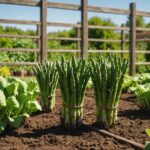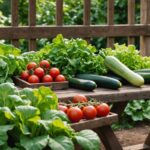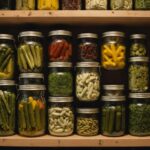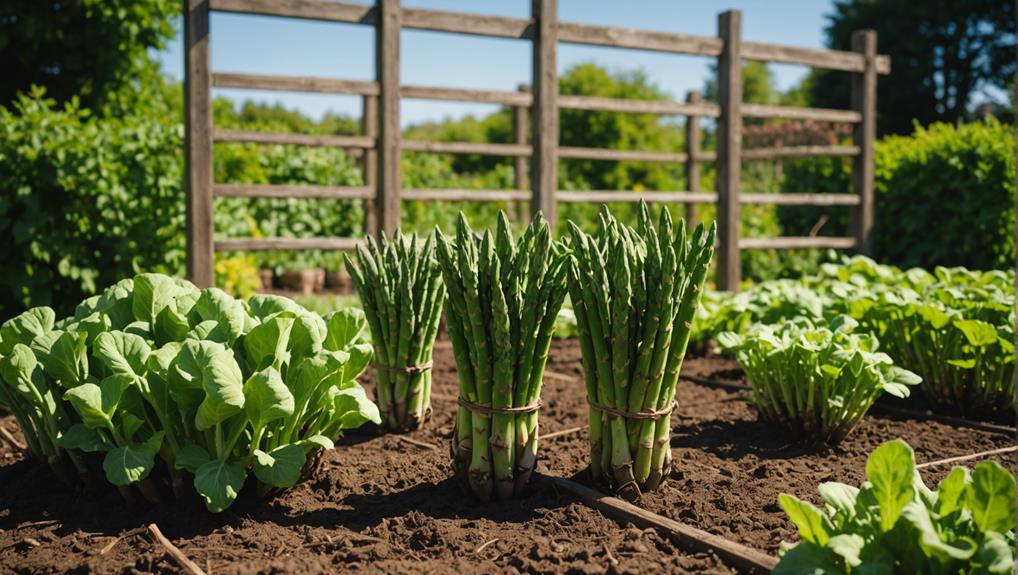As an Amazon Associate I earn from qualifying purchases.
Have you ever wondered how you can make the most out of rainwater? Well, today we’re going to talk about maximizing efficiency in rainwater harvesting. Rainwater harvesting is a sustainable way to collect and store rainwater for various uses, such as irrigation, gardening, or even drinking water. But how can you optimize your rainwater harvesting system for maximum efficiency? Don’t worry, we’ve got you covered!
Firstly, it’s important to understand how much rainwater you can actually collect. This depends on factors such as the size of your catchment area, the intensity of rainfall, and the efficiency of your collection system. By calculating these variables, you can estimate the amount of water you can collect and decide whether it will be sufficient for your needs.
Next, you’ll want to focus on improving the efficiency of your collection system. This includes ensuring your catchment area is clean and free from debris, as this can affect the quality of the collected water. Additionally, installing a filtration system can help remove any impurities from the water, making it safe for various uses. Proper maintenance of your collection system is also crucial to maximize efficiency and ensure the longevity of the system.
In our upcoming article, we’ll dive deeper into the various techniques and strategies you can employ to maximize efficiency in rainwater harvesting. From using appropriate storage tanks to implementing smart distribution systems, we’ll cover it all. So, if you’re interested in learning more about how to make the most out of rainwater, stay tuned for our informative and practical tips!

Maximizing Efficiency in Rain Water Harvesting
Rain water harvesting is an essential practice that helps conserve natural resources and mitigate water scarcity. By collecting and storing rainwater, we can ensure a sustainable water supply for various purposes, such as domestic use, irrigation, and industrial applications. In this article, we will explore the importance of rain water harvesting, the components of a rain water harvesting system, and methods to maximize its efficiency.
Importance of Rain Water Harvesting
Conserving Natural Resources:
One of the primary reasons for implementing rain water harvesting is the conservation of natural resources. As the global population continues to grow, the demand for water increases, and our natural water sources become more strained. Rain water harvesting allows us to reduce the pressure on these sources and preserve them for future generations.
Mitigating Water Scarcity:
Water scarcity is a pressing issue faced by many regions around the world. By implementing rain water harvesting systems, we can supplement the available water supply, especially during dry seasons or in areas where water scarcity is a significant concern. This helps to ensure a more reliable and sustainable water source for communities.
Components of Rain Water Harvesting System
A rain water harvesting system consists of various components that work together to collect, store, and distribute rainwater effectively. These components include the catchment area, conveyance system, storage units, and filtration and treatment processes.
Catchment Area:
The catchment area is the surface where rainwater is collected. It can be a roof, a paved courtyard, or any other surface that enables the collection of rainwater. The efficiency of the catchment area depends on its material, size, and slope.
Conveyance System:
The conveyance system is responsible for transporting the collected rainwater from the catchment area to the storage units. It typically includes gutters and downspouts or a network of pipes. Proper design and maintenance of the conveyance system are essential to ensure efficient water flow.
Storage Units:
Storage units are used to store the harvested rainwater for future use. They can be underground tanks, aboveground tanks, trenches, or ponds. The choice of storage unit often depends on factors such as available space, cost, and water demand. Adequate storage capacity is crucial to ensure a sufficient water supply during periods of low rainfall.
Selection and Design of Catchment Area
The selection and design of the catchment area play a vital role in maximizing the efficiency of rain water harvesting. Consider the following factors when choosing and designing the catchment area:
Determining Roof Suitability:
When using a roof as the catchment area, it is essential to assess its suitability. Factors to consider include the material, slope, and condition of the roof. Roofs made of materials that are safe for water collection, such as metal, concrete, or tile, are preferable.
Calculating Rainfall Catchment:
To determine the size of the catchment area needed, you must calculate the rainfall catchment. This involves gathering rainfall data from previous years and considering factors such as the average rainfall in your area, the size of the catchment area, and the intended water usage. This calculation will help you estimate the water yield from the rainwater harvesting system.
Considerations for Ground Catchments:
In some cases, the catchment area may not be a roof, but instead, a paved courtyard or other ground surface. When using ground catchments, proper design is crucial to prevent soil erosion and ensure efficient water collection. Measures such as trenches, permeable surfaces, and slope adjustments can help optimize the efficiency of ground catchment systems.
Types of Conveyance Systems
Several types of conveyance systems can be used to transport rainwater from the catchment area to the storage units. The choice depends on factors such as building design, available space, and budget. Common conveyance systems include gutters and downspouts, piping systems, and drip irrigation.
Gutters and Downspouts:
Gutters and downspouts are commonly used for rain water harvesting from rooftops. They collect rainwater from the roof and direct it towards the storage units. Regular cleaning and maintenance of gutters and downspouts are necessary to prevent blockages and ensure efficient water flow.
Piping Systems:
Piping systems provide a more efficient and controlled means of transporting rainwater. They can be used in situations where gutters and downspouts are not suitable. Piping systems require proper design and sizing to ensure efficient water flow and prevent clogging.
Drip Irrigation:
For irrigation purposes, rainwater can be distributed directly to plants using a drip irrigation system. This system minimizes water loss through evaporation and ensures that water reaches the plant roots where it is most needed. Drip irrigation also helps conserve water by only providing the necessary amount to each plant.
Storage Units for Rain Water Harvesting
To maximize the efficiency of rain water harvesting, selecting the appropriate storage unit is crucial. Different types of storage units are available, each with its advantages and considerations.
Underground Tanks:
Underground tanks are ideal for saving space and maintaining the aesthetic appeal of the surroundings. They provide larger storage capacity and help preserve the harvested rainwater by keeping it cool and protected from sunlight. However, underground tanks require proper installation and regular maintenance to prevent leakage and contamination.
Aboveground Tanks:
Aboveground tanks are more easily accessible for maintenance and repairs. They can be installed on rooftops or in open spaces, making them suitable for both residential and commercial setups. Aboveground tanks come in various sizes, allowing for flexibility in storage capacity.
Trenches and Ponds:
Trenches and ponds are effective storage options for larger-scale rain water harvesting systems. They require more significant land space but can provide substantial storage capacity. Trenches and ponds should be designed to prevent water stagnation and contamination.
Filtration and Treatment of Harvested Rainwater
Proper filtration and treatment of harvested rainwater are essential to ensure its quality and suitability for various uses. The following are common methods used for filtration and treatment:
Sedimentation:
Sedimentation is the process of allowing suspended particles to settle at the bottom of a tank or storage unit. It is often the first step in filtration and helps remove large debris and solids from the harvested rainwater.
Filtration Methods:
Various filtration methods can be employed to remove finer particles and impurities from the harvested rainwater. These include mesh filters, sand filters, activated carbon filters, and ceramic filters. The choice of filtration method depends on the level of filtration required and the intended use of the water.
Disinfection:
Disinfection is necessary to eliminate any remaining bacteria, viruses, or pathogens in the harvested rainwater. Chlorination and ultraviolet (UV) treatment are commonly used methods for disinfection. Proper disinfection ensures the safety and potability of the stored rainwater.
Distribution and Usage of Harvested Rainwater
Once the rainwater has been collected, stored, and treated, it can be distributed and used for various purposes, including domestic use, irrigation, and industrial applications.
Domestic Use:
Harvested rainwater can be used for everyday household activities such as flushing toilets, washing clothes, and watering plants. Using rainwater for domestic purposes reduces the demand for fresh water from conventional sources, leading to water conservation.
Irrigation:
A significant portion of water consumption goes towards irrigation in agriculture. Using harvested rainwater for irrigation reduces the reliance on freshwater sources. Properly treated rainwater can provide plants with the necessary hydration while ensuring efficient water use.
Industrial Applications:
In industrial settings, rainwater can be used for cooling systems, cleaning processes, and as an alternative to fresh water sources for manufacturing and production. Incorporating rain water harvesting into industrial practices helps reduce water usage and minimize environmental impact.
Maintenance and Upkeep of Rain Water Harvesting System
To ensure the long-term efficiency of a rain water harvesting system, regular maintenance and upkeep are essential. Here are some key tasks to consider:
Regular Cleaning and Inspections:
Regularly clean the catchment area, gutters, downspouts, and storage units to remove debris and prevent blockages. Inspect the system for any signs of damage or leaks that may need repairing.
Repairing and Replacing Components:
Address any issues or malfunctions promptly to avoid further damage to the rain water harvesting system. Repair or replace components as needed to maintain optimal performance.
Cost-Benefit Analysis of Rain Water Harvesting
Implementing a rain water harvesting system requires an initial investment in terms of materials, installation, and maintenance. However, the long-term benefits outweigh the costs.
Initial Investment:
The initial investment includes costs for materials such as storage units, conveyance systems, and filtration equipment. It also includes the cost of professional installation or labor for DIY projects.
Return on Investment:
The return on investment (ROI) of rain water harvesting can be significant in the long run. By reducing reliance on freshwater sources, the system helps lower water bills, conserve resources, and protect the environment. Additionally, some regions offer incentives or rebates for rain water harvesting systems, further increasing the ROI.
Conclusion
Rain water harvesting is a crucial practice for conserving natural resources and mitigating water scarcity. By implementing effective rain water harvesting systems, we can maximize efficiency and ensure a reliable and sustainable water supply. Proper selection and design of catchment areas, conveyance systems, storage units, and filtration methods are key to maximizing the benefits of rain water harvesting. Regular maintenance and a cost-benefit analysis further contribute to the effectiveness and longevity of rain water harvesting systems. With the commitment to maximizing efficiency in rain water harvesting, we can contribute to a more sustainable future and address the challenges of water scarcity.
As an Amazon Associate I earn from qualifying purchases.










